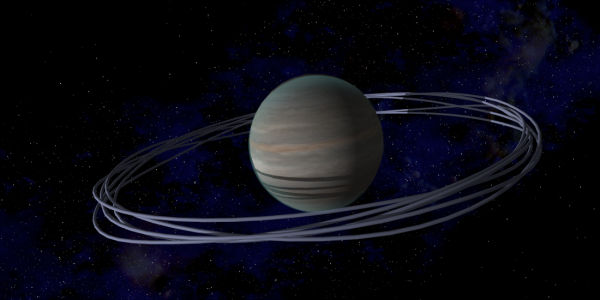BY LETTER
Fiber Habs
 Image from Steve Bowers | |
| This fibre hab consists of a loosely woven array of microgravity tubes, inhabited mostly by sophonts adapted to freefall | |
From a distance, lone fiber habs may be confused with topopolis-like rotating habs; however fiber habs do not rotate to generate spin-gravity, and are more closely related to freespheres.
Their name comes from two factors: their visual similarity to fibers, and because they are commonly joined together into larger structures. Fiber habs may be joined together into structures that are topologically analogous to woven or felted textiles, ropes, basketwork, knotted cords, twisted vines, and fractal vascular systems. Toroidal habs may be joined together into chain maille-like matrixes. Skeletal polyhedral forms can be produced by habs acting as the polyhedron's edges. Where adjacent fiber habs contact one another they may be joined together by an open or hatched portal, allowing connectivity between habs.
Fiber habs are sometimes combined with other hab designs to produce hybrid forms. The hubs of Bishop rings or McKendree cylinders can be maglev-coupled to a fiber hab that is threaded through them; numerous habs can be spaced along a fiber hab like beads on a string. Smaller spin-grav habs can be coupled to fiber habs with their axis of rotation perpendicular to the fiber hab's long axis. Freespheres can be joined together with fiber habs into various arrangements.
If enough fiber habs are packed together into a small enough volume, they risk gravitational collapse due to Jeans instability. At 20 °C and 1 atm, a spherical volume of an Earth-equivalent atmospheric mix will collapse above a diameter of about 34,750 km. A sphere this size has a volume of 21,971,669,064,430 km^3. For comparison, a fiber hab that is 500 km in diameter and 10^8 km long has a volume of 19,634,954,084,936 km^3. Low-power dynamic compression members or orbital rings are employed to keep dense fiber hab networks stable.
Related Articles
Appears in Topics
Development Notes
Text by Johnny Yesterday
Initially published on 17 March 2021.
Initially published on 17 March 2021.






